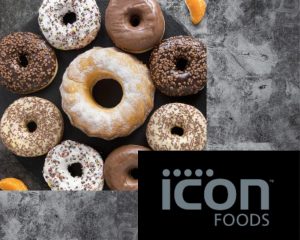 The Fight for Flavor
The Fight for Flavor
Consumers want products with fewer calories, reduced sugar, and a low glycemic impact—with the same great taste as the artificial alternatives. No problem, right? Food developers have been forced to search for innovative food ingredients that pack a nutritional punch and deliver exceptional flavor. One of the most popular health food patterns that formulators have been compelled to keep up with is the inclusion of probiotics (2). Probiotics have been a common topic in the scientific community since the early years of the twentieth century (4). Consumers acknowledge the general benefits of probiotics and seek them out as a tool for maintaining a healthy lifestyle, but are probiotics alone enough?
It’s time to meet the new kid on the block! Prebiotic fibers began their debut into the growing health food market nearly a decade ago, but with a rocky public perception. Prebiotics versus probiotics… what’s the difference? Over time, food scientists have helped to answer that question. The Probiotics Learning Lab defined prebiotics as, “indigestible natural fibers which are fermented by our good gut bacteria to help them thrive” and have little to no caloric value (1). Our bodies can’t breakdown prebiotic fibers, but the microorganisms in our lower digestive tract—probiotics—thrive on them (5)! As consumers became more aware of the health benefits, their demand for prebiotic food products grew immensely. Thus, food developers turned to inulin and FOS: fructooligosaccharides (3). Inulin quickly became the go-to prebiotic fiber, but pandemic related supply chain shortages left formulators fumbling for an alternative prebiotic fiber that could provide the necessary structure for their products.
Formulating with FOS
Enter Prebiotica FOS, a plug-in solution for inulin replacement from Icon Foods. We understand that applicational needs may vary, which is why we offer Prebiotica P95 in a fine powder—ensuring its solubility and increasing ease of use. Reconfiguration is unnecessary because of the close chemical relationship between inulin and Prebiotica FOS.
Because the chain length and degree of polymerization of Prebiotica P95 is near that of inulin, it is ideal for use in formulations in which inulin acts as a sugar replacement. Our R&D team has worked to ensure minimal nuances in texture when substituting Prebiotica P95 for inulin. This prebiotic food ingredient can also mimic fat in the formula. While Prebiotica P95 can be used as a 1:1 replacement for inulin, it is also a useful tool in the creation of brand-new products!
Sources
- Beeson, Kerry. “Prebiotics: A Look at FOS & Inulin.” Probiotics Learning Lab, Optibac Probiotics, 9 June 2022, https://www.optibacprobiotics.com/learning-lab/about/prebiotics/prebiotics-closer-look-at-fos-and-inulin.
- Collins, John. “What Are Prebiotics?” Edited by Neha Pathak, WebMD, WebMD LLC, 14 Sept. 2020, https://narcos.in-the-band.net/digestive-disorders/prebiotics-overview.
- “Fructo-Oligosaccharides.” Edited by PDRHealth, PDRHealth.com, PDRHealth, 2022, https://pdrhealth.com/fructo-oligosaccharides/.
- Mandal, Ananya. “Probiotics History.” Edited by Sally Robertson, News: Medical Life Sciences, 27 Feb. 2019, https://www.news-medical.net/health/probiotics-history.aspx#:~:text=Probiotics%20History.%20Probiotics%20have%20been%20a%20subject%20of,replaced%20with%20beneficial%20ones%20to%20confer%20health%20benefits.
- Saulnier, Delphine M A, et al. “Identification of Prebiotic Fructooligosaccharide Metabolism in Lactobacillus Plantarum WCFS1 Through Microarrays.” Applied and Environmental Microbiology, American Society for Microbiology, 19 Jan. 2007, https://www.ncbi.nlm.nih.gov/pmc/articles/PMC1828832/.